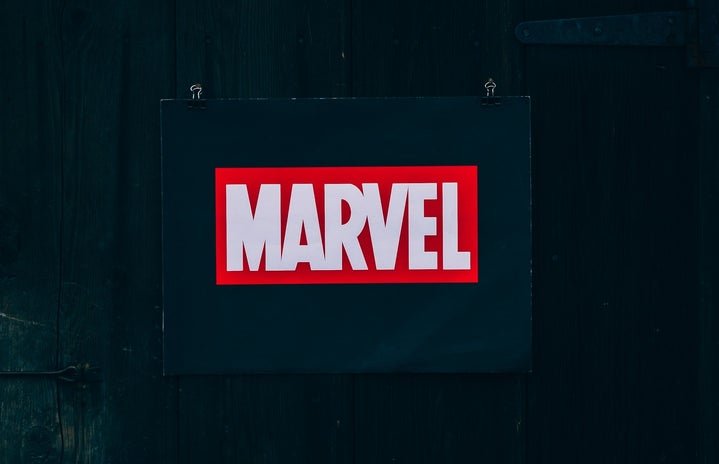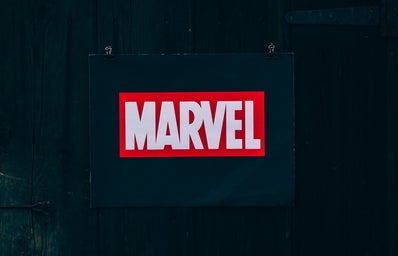WandaVision has taken the world by storm, with the show being at the top of the trending page on Twitter every week, dominating TikTok with 1.2 billion views on the WandaVision hashtag and, according to Forbes, became the number one worldwide viewed show on Feb. 11.
So, why is everyone so crazy about WandaVision? Well, one reason why people are so excited about the show is that it is the first addition to the Marvel Cinematic Universe since “Spider-Man: Far From Home,” which hit theaters in July 2019. Needless to say, fans of the MCU were starved for some fresh content.
Another reason why people are so into the show is that it gave fans a deeper view into two secondary MCU characters, Wanda Maximoff (the Scarlet Witch) and Vision. Both of these characters made their debut in “Avengers: Age of Ultron” and quickly became fan favorites, but neither have had a plot devoted solely to them. With WandaVision, fans get a deeper look into each of these characters and their powers.
The show takes place directly after the events of “Avengers: Endgame,” with the titular characters finding themselves the stars of a sitcom with the same name as the one we are watching. (It’s a show within a show, how meta?) With each episode, the characters enter a new decade.
Decades in WandaVision
Each episode of WandaVision is set in a specific decade and is based on a popular sitcom from that decade. Let’s go over each episode’s decades and homages to previous sitcoms:
Episode one, “Filmed Before a Live Studio Audience,” is set in the 1950s and is heavily inspired by The Dick Van Dyke Show. Wanda and Vision take place in classic sitcom tropes in this episode, like forgetting an important date on the calendar and having a big misunderstanding between the couple. There is also the beginning of the nosy neighbor trope in this episode with the character Agnes, who guest stars in future episodes as well.
Episode two, “Don’t Touch That Dial,” takes place in the 1960s. This episode is based on Bewitched, which can be seen in the opening credits of the show and the plot where the characters have to be sure to hide their powers from their neighbors. The trope of the neighborhood queen is used in this episode, as well as Wanda and Vision having to fit in in order to be happy in Westview.
Episode three, “Now in Color,” is set during the 1970s and takes inspiration from The Brady Bunch. This can be seen not only in the opening credits, but also in the set, with the Vision residence being almost identical to the Brady home.
Episode five, “On a Very Special Episode…,” takes place in the 1980s and is based on Family Values, and episode six, “All-New Halloween Spooktacular!” is set in the 1990s and is inspired by Malcolm in the Middle. Both of these episodes are very reflective of their sitcom’s opening credits as well as their sets. Episode seven will most likely take place in the 2000s and be based on Modern Family.
Commercials in WandaVision
Along with each episode taking place in a new decade, each episode features a commercial in the middle of the show for a made-up product in WandaVision-land (or as SWORD calls it, the “Westview anomaly”). While some may just brush this off as more sitcom fun, when taking a deeper look into these commercials we can see a deeper meaning. It seems like each ad is based on a traumatic event that happened in Wanda’s life.
For example, in the first episode, the commercial is for a toaster created by none other than Stark Industries, the fictional company founded by Howard Stark and later is led by Tony Stark (AKA Iron Man). In the ad, when the toaster is turned on it makes the same sound as when Iron Man’s arc reactors are powered up. Also, once the toast is put into the toaster, it beeps for a while without going off, which resembles a ticking bomb. Here, the toaster represents the bomb that didn’t go off when Wanda’s home country, Sokovia, was struck, leaving her and her twin brother stranded for two days in the rubble. The creator of that bomb? None other than Stark Industries. Also, “toaster” is a nickname given to robots, so that’s probably a joke referring to Vision.
In the second episode, the commercial is for a watch. That watch is called a “Strücker,” which happens to be the name of the Hydra scientists that experimented on Wanda and her brother and gave them their powers. The watch can also symbolize Wanda’s wish for more time for Vision, which is what she said in “Avengers: Infinity War.”
In episode three, the commercial is for “Hydra Soak.” This one is pretty obvious, as Hydra is the organization that took Wanda in and gave her her powers. However, the commercial says, “For when you want to get away, but you don’t want to go anywhere.” This can be a reference to Wanda “getting away” from the pain in her real life and going to this sitcom reality.
In the fifth episode, the commercial is for a paper towel brand named “Lagos.” This is a reference to the incident in Lagos, Nigeria, that took place in “Captain America: Civil War” when Wanda accidentally sent a bomb into a building while trying to save Steve Rogers (Captain America), killing 26 civilians. The slogan for this product is “for when you make a mess you didn’t mean to,” referring to Wanda doing this by accident.
In episode six, the commercial actually takes place from Wanda’s son’s, Billy, point of view. It is for a yogurt called “Yo-Magic,” and the commercial features a little boy who is stranded on an island and is given the yogurt by a shark. However, since the boy is unable to open the yogurt, he ends up dying on the island. This is referring to some being telling Billy that if he doesn’t use his magic, him or his loved ones are going to die.
Fan Theories
So, who is doing this to Wanda? Did she put herself into this sitcom world? We know that she has some control over it, given that she can enter and leave the “hex” (shoutout to everyone’s favorite astrophysicist, Darcy Lewis, for that nickname), and because she expanded the boundary in episode six. Some fans have some ideas as to why this is all happening.
The first and most popular theory for the show is that Mephisto, AKA Marvel’s version of the devil, is behind all of this. And that would make sense, in the comic books Mephisto wanted Wanda and Vision’s kids because they were so powerful. In fact, since Vision and Wanda technically cannot have kids (for obvious reasons) they were brought to life with pieces of the devil’s soul.
For the first two episodes of the show, it seemed like everybody in Westview wanted Wanda to get pregnant. Starting off with Agnes in episode one giving Wanda seduction techniques and her mentioning good schools in episode two. It also seemed like the constant chanting of “for the children” in episode two was almost sort of a ritual to get Wanda pregnant. It’s possible that Mephisto is in control of the town and that he wanted to make sure that Wanda had kids.
The devil is actually subliminally mentioned all over the first couple of episodes in WandaVision, especially in episode two. The main symbol of the devil is the appearance of the hexagons throughout the show as hexagons have six sides. (Side note: the “hex” is a huge reference to the comic books because that is what Wanda’s powers were called!) In episode two, some things appear to be in color, however, the only color ever shown is red. Also, when the show begins to turn to color at the end of the episode, the first color to appear is red. Furthermore, when Agnes shows up to drop off her bunny for Wanda and Vision’s performance for the talent show, she says that his name is Señor Scratchy. Mr. Scratch is a nickname for the devil. Also, when Dottie says, “The devil is in the details, Bev,” Agnes makes a side comment to Wanda, saying, “That’s not the only place he is.” This could mean that the devil is in Westview.
Speaking of Agnes, let’s go over her character. She seems to be based on the character Agatha Harkness from the comics. Agatha Harkness is a witch from the Salem days who trained Wanda to help her control her powers. She also played a big role in Wanda’s children’s lives by basically being their nanny/babysitter. Many fans think that she may be working with Mephisto in order to keep Wanda in Westview and to make her happy so she will want to stay. Agnes mentions her husband, Ralph, frequently throughout the show, but he is never shown on screen. This is a common sitcom trope, constantly referring to a character but never letting the audience see them, but it is possible that this mysterious Ralph could be Mephisto.
Now, we’ll move onto “Pietro Maximoff.” His name is in quotes because fans think that this is not actually Pietro, but someone more sinister with ulterior motives. Some say he is Mephisto (that seems to be a trend on TikTok and Twitter, just assuming that any character is Mephisto), but it is more likely that he is Nightmare, a demon who works for the devil. It makes sense because Wanda didn’t recognize him when he knocked on her door, and she even told Vision, “I didn’t do that.” While Wanda is a very powerful person, possibly even the most powerful in the MCU, it seems to be that she cannot bring people back from the dead. This would explain why she had no idea that Pietro was coming, and why he was “re-cast.”
When Pietro first appeared at the end of episode five, fans immediately noticed that he was re-cast to Evan Peters, who played Peter Maximoff in the X-Men movies! The X-Men movies were not considered to be a part of the MCU since Fox owned the rights to them, but once Disney acquired Fox it became possible. With Evan Peters in the MCU, this opened up the possibility of the Multiverse, which was first mentioned in “Spider-Man: Far From Home.” Plus, the next Doctor Strange movie, which apparently is kicked off by the events of WandaVision, is titled “Doctor Strange in the Multiverse of Madness,” so it is possible that Wanda opened the Multiverse to bring Peter to the MCU to replace Pietro. However, after episode six, it seems more likely that that was a misdirect because he seemed to know that the Westview anomaly wasn’t a true reality, asking Wanda how she did it and where she got all of the kids from.
So, what’s up with SWORD (which stands for Sentient Weapon Observation and Response Department)? Well, Director Tyler Hayward didn’t seem too concerned about helping the people of Westview or making sure that Wanda is okay. All he seemed to care about was Vision, and fans think that he has bad intentions with Vision’s body and wanted to create new weapons from it, hence him only tracking Vision in the hex. Also, he didn’t go to help Vision when he tried to leave the boundary and was in awe while watching him die. This may seem a little far-fetched, but some fans believe that Hayward might actually be Ultron(!) and that is why he is so obsessed with Vision. Ultron was a program, so it is entirely possible that he didn’t truly die and was waiting for a new form, bringing the MCU full circle as Ultron is actually the one who created Vision’s body in the first place.
At the end of the day, these are all theories and we really don’t know what is going to happen with each episode, which makes it more fun to watch and try to solve the mysteries. As for Wanda, she hasn’t gone completely bad and villainous yet, but all of her grief and the possibility of her utopia being taken from her does make her a potential villain for upcoming MCU movies. She may not have started her sitcom reality, but she certainly will fight for it.


